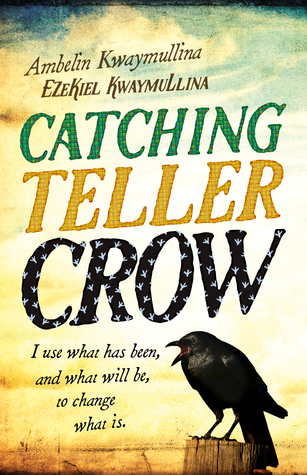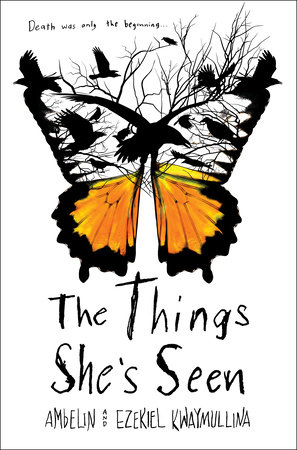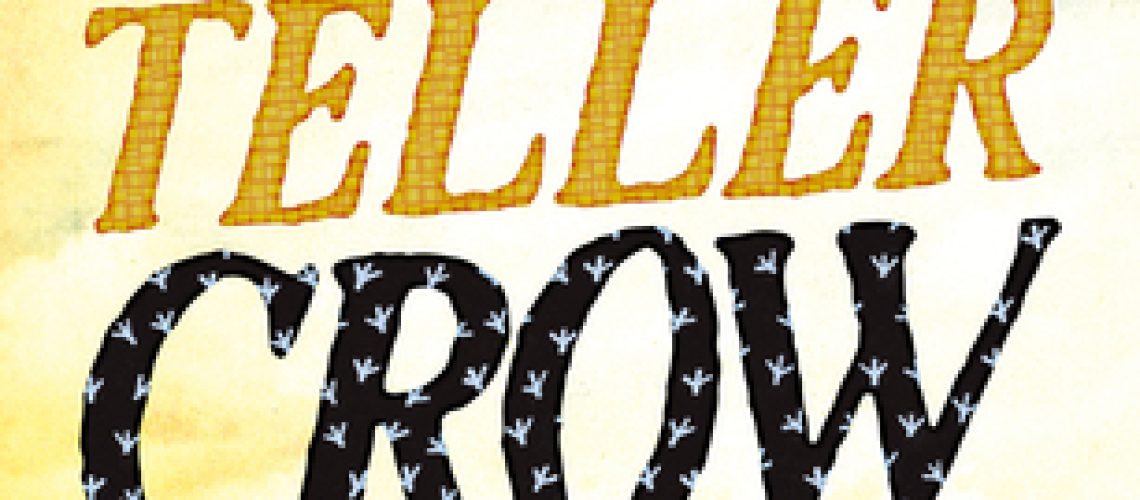The Aurealis Awards are Australia’s premier juried award for speculative fiction and were presented today in Melbourne. I had the privilege and delight of being part of the jury for the Best Young Adult Novel category. That particular award went to Catching Teller Crow by Ambelin and Ezekiel Kwaymullina. I wanted to share a bit about this fantastic book, but please note the opinions here are my own and do not reflect the rest of the jury or the Aurealis Awards at large.
Catching Teller Crow follows Beth Teller, who died in a tragic accident several months ago. Since then, she has been helping her father, a police investigator who is struggling to cope with his grief. His boss has sent him to a rural Australian town to oversee a case in which a children’s home burned down, claiming one adult victim. It should be a straight-forward job, something easy to facilitate a return to work for Michael Teller after his bereavement. But of course it’s not, as the Tellers discover when they begin interviewing Isobel Catching, a teenage witness.

We know from the beginning that Beth is dead. The book is told in first person from her perspective, later alternating with Isobel’s perspective. This choice of a ghost as a narrator is an early flag that the book deals with some dark material. It tackles issues of rape, pedophilia, racism, murder and grief. These are perhaps not immediately obvious choices of topic for a young adult novel. However, these subjects are deftly handled for the target audience. Isobel’s story contains the worst of the trauma, and she presents her tale as taking place in a realm near ours — one filled with evocative imagery. Her attackers are presented as literal monsters, stealing away her colours and leaving her grey and without hope. Framing her story in this way means the trauma she experiences is never entirely explicit but is easily read between the lines. The sections from Beth’s perspective also step back from showing everything explicitly while nonetheless making absolutely clear what’s going on. Beth might be dead, but there are some things her father still doesn’t want her seeing — such as dead bodies (she didn’t come back as a ghost until a few days after her accident). And we don’t need to see the dead bodies to know that they’re there. This approach avoids fetishising death and violence.
Isobel’s sections are also told in free verse and demonstrate the sheer technical skill and command of language the authors possess.. Variation in sentence length effectively controls the pace, with short, punchy sentences giving power and urgency to the action while longer sentences invoke the slower, more reflective sections. Beth’s sections are in prose, but they nevertheless convey some beautiful turns of phrase and use of imagery that make it a joy to read.
Race is a key issue in Catching Teller Crow. Ambelin Kwaymullina has been a strong advocate for the Own Voices movement, and Catching Teller Crow weaves together the stories of a number of Aboriginal girls, allowing for different portrayals. Isobel is described as having pale skin, but her maternal line is Aboriginal. As the story progresses, she draws strength from the tales of those ancestors. These are stories of hardship that illustrate the impact that the Stolen Generations — where members were forcibly taken away to be assimilated into white settler culture — and white settlement had on her family. These were unquestionably horrific events, and the story doesn’t gloss it over. However, it also shows that these events ultimately didn’t quash the sense of self Isobel’s ancestors possessed. In turn, Isobel remembers their stories and draws strength from them when her own sense of self is under attack.
Beth’s story highlights other aspects of race relations in Australia. Her father, Michael, grew up in a small town, much like the one they find themselves in. His father, the white local police officer, kicked him out for having a mixed-race relationship and refused to have anything to do with Beth. So Michael is well aware of the prejudices of small towns and just how much power the police can wield in such a place. While Indigenous Australians are no longer officially forcibly separated from their families, it may also be that no one cares enough to investigate should they go missing. Indeed, while the overall tone of the story is uplifting, it also points out uncomfortable truths. Crimes may have been undertaken by a particularly heinous individual; however, the fact that these crimes took place and that they were committed in such a horrific fashion mean that society at large has failed in its duty of care and that the individuals who make up that society must face the need for change to ensure it does not happen again.
While the content may be dark, it’s not at all a depressing read. I’ve noted before that Ambelin Kwaymullina is deft at presenting difficult topics while offering hope. In Catching Teller Crow, it is the relationships that leaven the darkness. While the book involves terrible people doing terrible things, a lot of pages are devoted to the relationships of people who genuinely care for each other. Beth does her best to snap her father out of the grief he’s wallowing in, encouraging him to reconnect with her maternal family. He, in turn, tries to shelter her from some of the nastier sides of life even as he recognises that she is dead. Additionally, Beth and Isobel develop a somewhat prickly friendship where hard truths are delivered out of genuine concern. This theme of genuine affection even extends to some of the minor characters, such as Allie, the deputy police officer who still hasn’t given up hope of finding her best friend, who went missing decades ago. While the rest of the town wrote off her friend’s disappearance as just another kid who ran away from home, Allie knows her friend would never do such a thing and holds (the somewhat contradictory) hope of finding her alive.
Overall, Catching Teller Crow is a masterful story that presents dark subjects in a way that allows their impact to be felt while also offering hope and remaining appropriate for a young adult audience. It is a must-read for anyone with an interest in ground-breaking works of young adult SFF, and I hope to see it on the ballot for the Lodestar Award next year.

The book will be published in the US by Knopf Books for Young Readers later this month under the title The Things She’s Seen. It will also be available where all good books are sold.








One Response